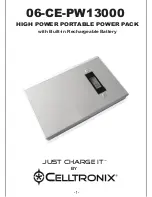
6
English
SPECIFICATIONS
Model
FCJ65V3
FCJ65S3
Voltage (by areas)*
(110V, 115V, 120V, 127V, 220V, 230V, 240V)
Power input
400W*
Wood: 65mm
Max. cutting depth
Mild steel: 6mm
No-load speed
0 – 3000 min
–1
3000 min
–1
Stroke
18mm
Min. cutting radius
25mm
Weight (without cord)
1.5kg
* Be sure to check the nameplate on product as it is subject to change by areas.
STANDARD ACCESSORIES
(1) Blade No.31 ................................................................. 1
For cutting thick lumber
(2) Splinter guard ............................................................. 1
(3) Chip cover ................................................................... 1
(4) Hexagonal bar wrench ............................................... 1
Standard accessories are subject to change without
notice.
OPTIONAL ACCESSORIES (sold separately)
(1) Blades, No.1 – No.6, 31*
* No.31 Blade is a standard accessory.
(2) Guide
Optional accessories are subject to change without notice.
APPLICATIONS
䡬
Cutting various lumber and pocket cutting
䡬
Cutting mild steel plate, aluminum plate, and copper
plate
䡬
Cutting synthetic resins, such as phenol resin and
vinyl chloride
䡬
Cutting thin and soft construction materials
PRIOR TO OPERATION
1. Power source
Ensure that the power source to be utilized conforms
to the power requirements specified on the product
nameplate.
2. Power switch
Ensure that the power switch is in the OFF position. If
the plug is connected to a receptacle while the power
switch is in the ON position, the power tool will start
operating immediately, which could cause a serious
accident.
3. Extension cord
When the work area is removed from the power
source, use an extension cord of sufficient thickness
and rated capacity. The extension cord should be
kept as short as practicable.
MOUNTING THE BLADE
1. Use the accessory hexagonal bar wrench to loosen
the blade set screws on the blade holder, as shown in
Fig. 1(a)
.
2. Holding the blade with its cutting edge facing the
front, insert the mounting portion of the blade into
the plunger groove until it touches the bottom of the
groove.
3. As shown in
Fig. 1(b)
, firmly clamp the side screw.
CAUTION
䡬
Loosened set screws may cause the blade to be
damaged. Always ensure that the set screws are
securely tightened. Always ensure that the plunger
groove is clean and clear of sawdust to ensure proper
blade mounting and set screw clamping.
4. Storing the hexagonal bar wrench
(1) Insert in a hole on the side of the main unit with
holding the short side horizontally as shown in
Fig. 2
.
(2) Rotate with the hexagonal bar wrench inserted and
secure as shown in
Fig. 2
.
ADJUSTING THE GUIDE ROLLER
The guide roller, shown in
Fig. 3
, is employed to prevent
the blade from snapping. Prior to use, adjust guide roller
in accordance with the following procedures:
(1) Loosen the holder set screw with the accessory
hexagonal bar wrench.
(2) Gently slide the guide roller until the roller groove
lightly touches the back of the blade.
NOTE
On delivery from the factory, there is a gap of about
3mm between the roller and blade.
(3) Firmly tighten the holder set screw.
CAUTION
䡬
The guide roller can be used only for Blades that
have a straight line on the rear that is longer than
50mm. (
Fig. 4A
and
4B
) When using other types
of blades (
Fig. 4C
), slide the guide roller in
backwards so that the guide roller does not contact
the blade.
䡬
When cutting thick boards or performing
continuous cutting operations, use the blade
shown in the
Fig. 4A
,
4B
and be sure to set the
guide roller.
CHIP COVER POSITIONING
1. Chip cover
Use the chip cover to reduce flying of cut particles
and to easily operate the saw.
01Eng_FCJ65V3_EE
3/10/09, 19:35
6








































